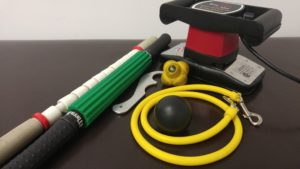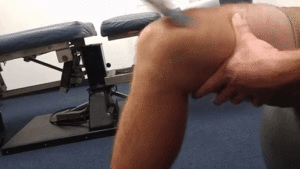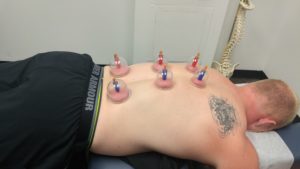Treatment Techniques to Fit your Body’s Demands
(Explanation of each technique provided below)
Manipulation Techniques:
Diversified
Flexion/Distraction
Low Force/Manual
Drop/Speeder Board
Soft Tissue Techniques:


Instrument Assisted Soft Tissue Technique Mobilization (IASTM)
Myofascial Release Technique (MRT)
Active Myofascial Release Technique (AMRT)
Ischemic Compression
Cross-Friction Massage
Vibration Therapy (NEW)
Cupping (NEW)
Post-Isometric Relaxation Stretching (PIR)
Proprioceptive Neuromuscular Facilitation Stretching (PNF)
Explanation of Adjusting Techniques:
Diversified – The most common form of chiropractic manipulation/adjustment in which the doctor utilizes their hands to give a direct, specific thrust to a joint in order to restore motion.
Flexion/Distraction – Great for low back pain or a disc injury. This technique utilizes a special table to create a gapping motion of the lumbar vertebrae, allowing the disc to pump in fluids and alleviate muscle tension.
Low Force/Manual – This technique involves the doctor using their hands at specific contacts on the joint to ease motion with pressure and movement, no thrusting. Here we work with your joints to achieve a normal range of motion.
Drop/Speeder Board – This technique is great for adjusting the pelvis and extremities. It utilizes a specific piece of equipment called a “speeder board” that releases with a certain amount of pressure to take advantage of your own body weight and gravity to get movement into a joint.
Explanation of Soft Tissue Techniques:
IASTM- My favorite and most effective technique, IASTM (similar to Graston) utilizes my personally designed metal tool (Z-Tool) to identify and eliminate scar tissue and adhesions at a specific site. This increases blood flow and cellular activity at the site of an injury/adhesion. Scar tissue is ‘re-modeled’ with new tissue that is stronger and more flexible. This leads to an increased range of motion, increased strength, and reduction of pain, even for old injuries and post-surgery. IASTM is great for chronic injuries and a quick recovery from new injuries.
.jpg)

MRT (Myofascial Release)– This technique utilizes specific soft tissue strokes following the natural shapes and contours of the body to release adhesions and increase blood flow. Degrees of intensity can vary from light to deep and can be combined with cooling gel to provide added benefits.
AMRT (Active Myofascial Release)– A very popular technique with athletes, AMRT concentrates on restoring movement patterns while eliminating dysfunction and scar tissue. The doctor will apply pressure to a specific area (muscle/joint) while the patient actively moves in a certain motion. Although slightly uncomfortable, ART is great for restoring motion to an extremity and eliminating chronic pain.
Ischemic Compression– This technique may be uncomfortable at first, but incredible relief is felt when it is completed. The doctor will locate an area in a muscle that contains trigger points or muscle tenderness. By applying pressure directly to the trigger point to starve it of oxygen, the body increases blood supply to that area to clear out the muscle tension and eliminate pain. You can actually FEEL the pain DISAPPEAR with this technique.
Cross Friction– The same principle as IASTM, this technique is less aggressive and better for injuries and adhesions closer to the surface of the body. The doctor will use their hands to rub the skin in perpendicular to the underlying tissue to initiate healing of scar tissue to normal tissue.
Vibration Therapy (NEW)– Vibration therapy uses a machine that provides varying degrees of oscillatory vibration over a large region. Think of it like a ‘car buffer for your body’. The intense vibration causes significant movement of blood flow throughout a region and can decrease pain sensitivity. Everyone LOVES it!
Cupping Therapy (NEW)– Cupping involves a st of specially designed ‘fish bowls’ that can be applied to different areas of the body and pumped to create a vacuum on the skin. The vacuum draws blood flow to the area that can restore function to muscles and reduce myofascial tension. This therapy tends to leave behind circular bruises that are not painful but can be very noticeable.
PIR Stretching– A form of stretching, this technique is great for tight muscles and limited flexibility. The doctor will have a patient activate a muscle to be stretched, upon relaxation, the muscle loosens and flexibility increases.
PNF Stretching– Similar to PIR, this technique takes a more aggressive approach to stretching a muscle using a sub-maximal contraction of the muscle to be stretched. This is generally used for athletes and severe cases of muscle tightness as it may cause muscle soreness after stretching.